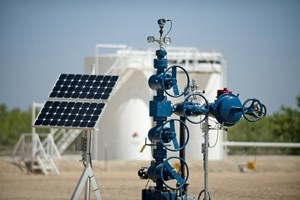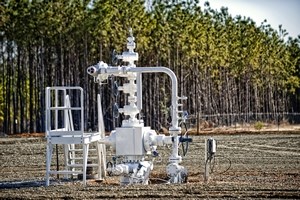Article by James Chater
When you consider that before 2008 fracking was an obscure, rarely cost-effective technique used on very few marginal gas fields, and that the USA was a net importer of natural gas, it is astonishing how the energy tables have turned in such a short time. Now it is the USA that is set to become a net exporter, and oil and gas prices have not only tumbled but stayed low and – if forecasts are to be believed – will not get much higher any time soon.
Overview
In 2013, the EIA estimated that two-thirds of the assessed, technically recoverable shale gas resource is concentrated in six countries, USA, China, Argentina, Algeria, Canada and Mexico. Other countries have smaller reserves, are (dreaming of) developing them, or, as in the case of France, have banned them. Be that as it may, North America is streets ahead of the rest of the pack. It is the USA that almost singlehandedly researched the technologies that made shale extraction competitive, including hydraulic fracturing (fracking) and horizontal drilling.
Why have other countries not followed suit? Part of the problem is that US technologies were tailored to local conditions and are difficult to adapt to different geologies. Other problems include the constraints imposed by densely populated areas, opposition to environmental threats (perceived and real) and different priorities (more emphasis on renewables). That said, the vast reserves in countries such as China and Argentina are likely to drive innovation in the future.
The Americas

US oil and gas fields have seen a surge in both production and productivity in recent years. In 2015 more than half of US natural gas production came from shale, and this is projected to more than double by 2040 (EIA). Hydraulic fracturing was first used on a significant scale in 1980s, on the Barnett gas formation in Texas. Horizontal drilling was pioneered between 2005 and 2008, and the technique soon spread to Fayetteville (Arkansas) and Haynesville (Louisiana). Since then the industry has never looked back. Barnett was not the first shale gas play, but it was the first in which deeper formations of up to 8,000 feet were successfully exploited.

At roughly the same time, production took off at other sites, notably Haynesville and Utica. At Haynesville, Cubic Energy made a significant discovery in 2006, after which Chesapeake made heavy investments. Utica straddles the US-Canadian border, extending over Ohio, NY State and Quebec. Drilling in Quebec started in 2006, but it was in Ohio that production got under way, between 2011 and 2013. In 2016 Halliburton and Eclipse Resources completed the “Purple Hayes” well, thought to be the longest horizontal well, with a lateral length of over 18,500 ft. and a total depth of 27,046 ft. including the lateral extension. Halliburton’s dual-fuel Q10 pumps were used on the project.

Canada has been producing shale gas since 2008. It is projected to account for almost 30% of the country’s natural gas production by 2040. Resources include the Cardium, Duvernay, Montney and Viking formations in Alberta, the Bakken formation in Saskatchewan, and the Montney and Horn River formations in British Columbia.
The world’s major oil and gas companies are flocking to Argentina to give the “dead cow” a new lease of life. These include YPF, Total, Wintershall and BP’s Pan American Energy, who have just banded together to invest USD 1.15 billion in Vaca Muerta.
China
China is among the first countries outside North America to develop shale resources. As the world’s secondlargest economy its appetite for energy is immense. This appetite is met mostly by coal, which has two major disadvantages: first, the coal is mostly situated in the western regions and has to be trundled to the power stations in the more populous east; second, coal has a much more severe impact on the environment than gas (table).
At the moment, China produces only a small amount of shale gas, but its reserves are thought to be larger than those of any other country. The geological formations of China’s shale differ from that of the USA, which makes it difficult to take over existing technologies. Although this has discouraged investors in the past, the country reported a 50% annual increase in its annual output for March 2017. In the first quarter, production increased 17% thanks to expanded production from the Changning- Weiyuan shale gas pilot zone in the south-western Sichuan province. Most of the reserves are concentrated in three basins – Sichuan, Tarim and Yangtze Platform – with the national companies CNPC (in collaboration with BP) and Sinopec owing the lion’s share.
Rest of the world
UK
– The country has extensive shale gas reserves, but the industry has got off to a slow start. After attempts to exploit fields in the south of England proved disappointing, in 2011 Cuadrilla announced a huge discovery of 200 trillion cubic feet of gas in place under the Fylde Coast in Lancashire, which Cuadrilla will exploit despite opposition from the local county council.
Algeria
– According to the EIA, Algeria has the biggest shale gas reserves in the world after China and Argentina. In an effort to reversed declining natural gas production, in 2014 Sonatrach offered 33 blocks located in four sedimentary basins with high shale gas and oil potential, resulting in contracts with five companies. However, progress has been hindered because locals are worried that fracking will consume scarce water.
Other countries thought to have significant reserves include India, Saudi Arabia, Australia, Poland, Romania and Ukraine. Ukraine wants to exploit its shale reserves in order to lessen its dependence on gas imported from Russia. Needless to say, Russia does not want this. The presence of reserves in the separatist-held Ukrainian regions of Donetsk and Lugansk is a significant, often overlooked aspect of the complicated political situation there. A safe distance from the fighting is the Novo-Nikolaevskoye complex, with its promising Rudenkovskoye field, which local operator JKX is exploiting in collaboration with Schlumberger.
Technology
Fracking has attracted some opposition because of its environmental impact. Apart from the above-mentioned issue of methane release, fracking consumes vast amounts of water, and no real alternative has been found. Attempts to replace water with hydrocarbon gel proved dangerous and expensive. GE and Statoil are researching chilled (liquefied) CO2 as a possible substitute, but its commercial exploitation is a long way off.
Another alternative is to replace fracking by directly drilling into the rock using high-pressure water. An Australian company, V2H International, has won a grant to commercialize the technology, which has the added advantages of dispensing with sand proppants and chemicals. The new technology allows oil and gas to flow through an extensive network of horizontal tunnels directly into a vertical well. Multiple radials can be placed at multiple depths.
There has been concern that wastewater from fracking can easily seep into drinking water reserves. This water needs to be captured, disposed of or recycled in an environmentally sustainable manner. Wastewater treatment (which can include desalination) is an obvious area where stainless steel can be applied.
Aeration Industries International has invented a technique for injecting air into water using advanced propeller technology to combine optimal mixing with wide-dispersion, fine bubble aeration. The Aire-O2® Aspirator eliminates black sludge and oxidizes sulphides to harmless sulphates. To resist corrosion, the motor is encased in high-polish 304 or 316 stainless steel housing.




